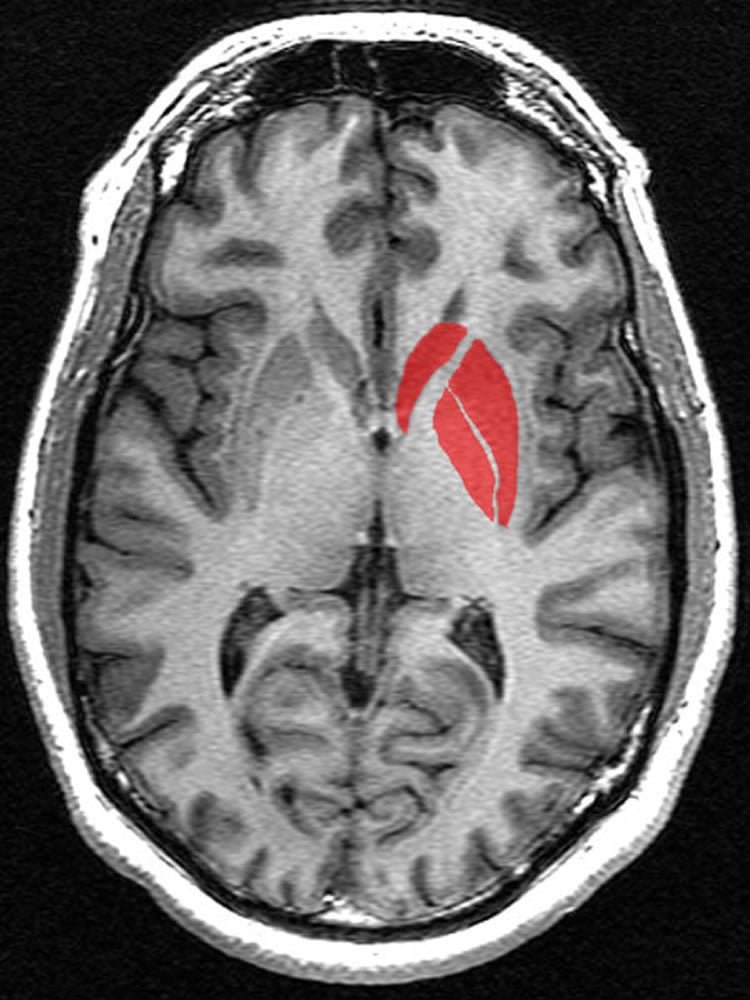Summary: According to researchers, people who consider themselves to be recreational cocaine users may be closer to addiction than they think.
Source: McGill University.
Non-dependent users also experience dopamine release in response to drug cues.
Even among non-dependent cocaine users, cues associated with consumption of the drug lead to dopamine release in an area of the brain thought to promote compulsive use, according to researchers at McGill University.
The findings, published in Scientific Reports, suggest that people who consider themselves recreational users could be further along the road to addiction than they might have realized.
“The study provides evidence that some of the characteristic brain signals in people who have developed addictions are also present much earlier than most of us would have imagined,” says Marco Leyton, an expert on the neurobiology of drug use and addictions and professor in McGill’s Department of Psychiatry.

Researchers have known for many years that cocaine use triggers the release of dopamine, a neurotransmitter involved in the brain’s reward system. In people with addictions, cues associated with drug use create the same effect. Visual cues — such as seeing someone using cocaine — are enough to trigger dopamine release and lead to craving.
Scientists have long believed that, as addiction progresses, cue-induced release of dopamine shifts to the dorsal striatum, a structure deep inside the brain extensively studied for its role in the way we respond to rewards.
“This area of the brain is thought to be particularly important for when people start to lose control of their reward-seeking behaviours,” Prof. Leyton says. “The dorsal part of the striatum is involved in habits — the difference, for example, between getting an ice cream because it will feel good versus being an automatic response that occurs even when it is not enjoyable or leads to consequences that you would rather avoid, such as weight gain or serious health hazards.”
“This switch from voluntary to habitual behaviour is thought to play an important role in the development of uncontrollable and compulsive drug use and the progression to addiction,” adds Sylvia Cox, a postdoctoral researcher at the McConnell Brain Imaging Center and the paper’s first author.
To better understand how soon this effect might be seen, Professor Leyton’s team used positron emission tomography (PET) scans to look at what happens in the dorsal striatum of recreational cocaine users.
The scientists created highly personalized cues by filming participants ingesting cocaine in the laboratory with a friend with whom they had used the drug before. During a later session, subjects underwent a PET scan while watching the video of their friend taking cocaine. Exposure to the cocaine-related cues increased both craving and dopamine release in the dorsal striatum.
“An accumulation of these brain triggers might bring people closer to the edge than they had realized.” The findings also underscore the “importance of providing help early” to avoid the severe effects of dependency, he adds.
Funding: This study was financed by the Canadian Institutes of Health Research.
Source: Justin Dupuis – McGill University
Image Source: NeuroscienceNews.com image is in the public domain.
Original Research: Full open access research for “Cocaine Cue-Induced Dopamine Release in Recreational Cocaine Users” by Sylvia M. L. Cox, Yvonne Yau, Kevin Larcher, France Durand, Theodore Kolivakis, J. Scott Delaney, Alain Dagher, Chawki Benkelfat & Marco Leyton in Scientific Reports. Published online April 26 2017 doi:10.1038/srep46665
[cbtabs][cbtab title=”MLA”]McGill University “Recreational Cocaine: Brain Area Associated With Addiction Activated Earlier Than Thought.” NeuroscienceNews. NeuroscienceNews, 23 May 2017.
<https://neurosciencenews.com/addiction-dopamine-cocaine-6758/>.[/cbtab][cbtab title=”APA”]McGill University (2017, May 23). Recreational Cocaine: Brain Area Associated With Addiction Activated Earlier Than Thought. NeuroscienceNew. Retrieved May 23, 2017 from https://neurosciencenews.com/addiction-dopamine-cocaine-6758/[/cbtab][cbtab title=”Chicago”]McGill University “Recreational Cocaine: Brain Area Associated With Addiction Activated Earlier Than Thought.” https://neurosciencenews.com/addiction-dopamine-cocaine-6758/ (accessed May 23, 2017).[/cbtab][/cbtabs]
Abstract
Cocaine Cue-Induced Dopamine Release in Recreational Cocaine Users
It has been proposed that the acquisition of drug seeking is related to the development of conditioned dopamine responses in the ventral striatum. As drug use continues and becomes habit-like, conditioned responses have been shown to shift to the dorsal striatum. Here, using the PET [11C]raclopride method and highly personalized cocaine cues, we report the first evidence in humans of the dorsal dopamine response prior to the onset of addiction.
“Cocaine Cue-Induced Dopamine Release in Recreational Cocaine Users” by Sylvia M. L. Cox, Yvonne Yau, Kevin Larcher, France Durand, Theodore Kolivakis, J. Scott Delaney, Alain Dagher, Chawki Benkelfat & Marco Leyton in Scientific Reports. Published online April 26 2017 doi:10.1038/srep46665






